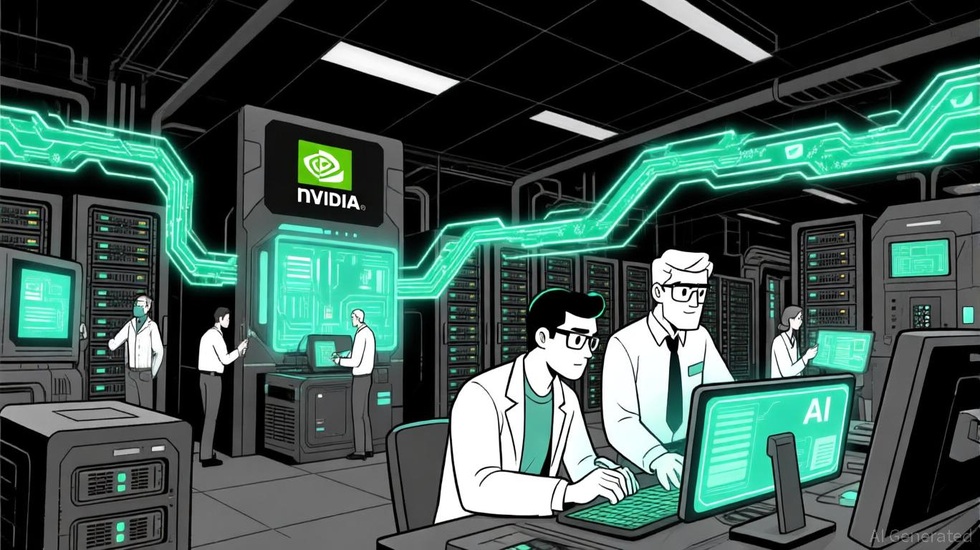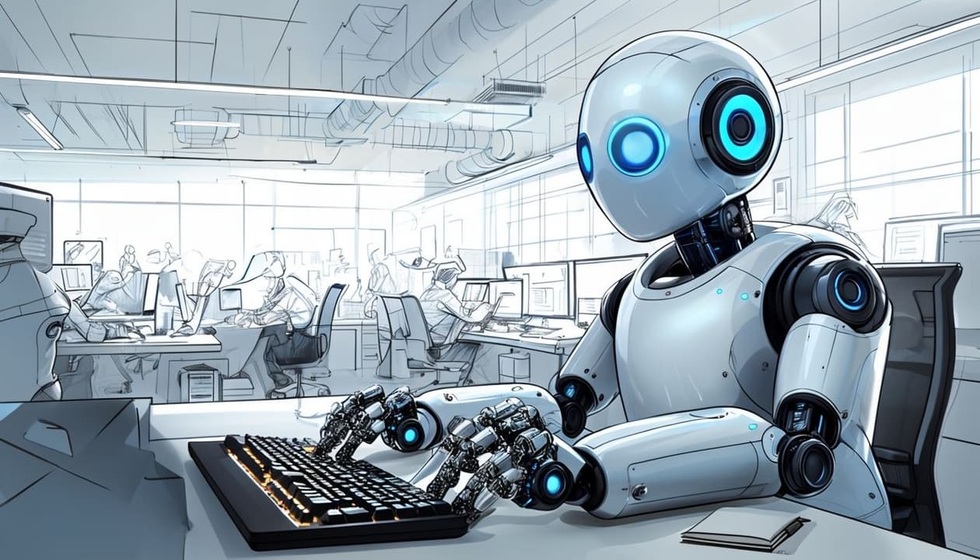During a recent investor presentation, Jon Gray, chairman and chief operating officer (COO) of investment giant Blackstone, showed a clip from the 1967 classic “The Graduate.” In the famous scene, young Benjamin Braddock (played by Dustin Hoffman) receives a succinct but telling piece of career advice from a friend of his parents: “One word: plastics.”
But in Gray's version, the word "plastics" (reflecting the space-age economy of the 1960s) is replaced with "power."
This subtle shift is more than just a dramatic move. It encapsulates a strategic message worth hundreds of billions of dollars, revealing who the real winners and losers will be in the era of artificial intelligence (AI) – a revolution that is reshaping the entire global economy at breakneck speed.
The advice that “energy is the new plastic” is more than just a clever metaphor. It encapsulates a wise investment strategy that Blackstone is pursuing, namely the “pick and shovel” strategy.
Instead of betting directly on risky generative AI companies, they choose to invest in the essentials that keep the craze alive.
Billion-dollar infrastructure fever: "This time is very different"
The AI race is fueling a wave of infrastructure investment on a historic scale. This year alone, four tech giants—Microsoft, Amazon, Google, and Meta—have pledged an estimated $350 billion to build data centers globally, a figure so large it evokes investment bubbles of the past, particularly the dot-com bubble of the late 1990s.
However, there is one core difference.
During the dot-com era, massive amounts of fiber optic cable were laid out to meet future demand, only to have 85% of that capacity go unused when the bubble burst. Today, companies aren’t building to meet demand.
They are struggling to keep up with current demand. Amazon, Microsoft and Google all admit that demand for AI computing is outstripping their ability to supply it, held back by three key factors: shortages of chips, power and building space.
OpenAI, the company behind ChatGPT, is the clearest example. With over 700 million weekly users—the fastest growth rate ever recorded—the message they repeated to their Microsoft partners in every meeting was: “We need more computing power.”
This creates a dilemma for tech giants. In theory, it would be in everyone’s best interest to slow down investment to avoid a costly arms race. But in practice, no one dares to stop.
The fear of being overtaken by competitors, the fear of missing out on the “AI moment” has become the biggest driving force, ensuring that this craze will continue. They are forced to join in, or else become someone else’s “lunch”.

Nvidia and OpenAI have just announced a $100 billion deal to build 10 GW of AI data centers by 2026, cementing Nvidia's position as an AI infrastructure mainstay (Illustration: AInvest).
Winners are not just coders
So, who will be the biggest beneficiaries of this huge influx of capital? The answer may surprise many.
The "hoe and shovel sellers":
Instead of betting on risky AI companies, Blackstone’s strategy is to invest in the essentials that fuel the boom—the people who “sold picks and shovels” during the gold rush.
Energy and Infrastructure: As Jon Gray has pointed out, “energy is the plastic of the new age.” Data centers consume a huge amount of electricity. This creates a golden opportunity for energy companies, as well as those who build and operate the infrastructure. Blackstone turned a $10 billion investment in data center company QTS in 2021 into a $70 billion empire today.
Skilled Labor: The boom in data center construction has created a huge demand for electricians, plumbers, and operations engineers. These jobs cannot be replaced by AI and are in serious shortage. A LinkedIn study even found that oil and gas jobs and skilled labor are the fastest growing sectors.
Chipmakers: Of course, Nvidia is the undisputed king of GPU chips—the brains of all AI models. Along with companies like Broadcom, they are the ultimate “picks and shovels” suppliers, directly benefiting from every dollar invested in AI infrastructure.
The "incumbent" giants
One important difference between AI and the Internet revolution is the nature of the change. The Internet wiped out a whole range of old industries (printing, video rentals) and replaced them with new dominant ones. By contrast, AI seems to be an evolutionary step, not a destructive revolution.
Existing strong businesses, especially tech giants, are better able to adapt and benefit from AI than be wiped out.
Google is integrating the Gemini generative AI into its core search engine.
Meta uses AI to power ads, allowing for more precise targeting.
Not only does Microsoft own a large stake in OpenAI, it also integrates AI into everything from Windows to the Office suite.
Software-as-a-service (SaaS) companies like Salesforce and Adobe are leveraging AI to automate tasks and improve efficiency, rather than being replaced.
The “incumbents” in the AI era are global technology corporations, and they are leading the change themselves.

In the gold rush, the richest man was not the one who dug up the most gold, but the one who sold picks and shovels (Illustration: Getty).
Losers and "Transformed" Careers
Of course, every technological transformation leaves people behind. AI is no exception, and the first impacts on the labor market are already beginning to appear.
"Newbie" in the technology industry
Stanford University research points to a worrying trend: AI appears to be replacing the least experienced group of workers (22-25 years old) in some office jobs.
Junior Software Developers: With the help of AI tools like Google's "Claude Code," experienced programmers can be more productive, reducing the need to hire entry-level positions. Data shows that since late 2022, the rate of hiring junior programmers has lagged significantly behind that of experienced workers.
Customer Service Representative: AI is becoming increasingly sophisticated at “picking up the phone” and answering customer questions, reducing the need for entry-level personnel for this position.
Industries that "operate by rules"
Jon Gray emphasized that Blackstone is investing in “rules-driven businesses”—where AI can fundamentally change the way work is done. Areas like accounting, insurance claims processing, or marketing compliance management all have the potential to be automated at a large scale.
While some experts argue that AI will only increase productivity, allowing businesses to do more with the same number of people, the scenario of job cuts is still present.
Creative industries
Even creative industries are not immune. Gray cited an example from Blackstone itself. The company produced two versions of the same commercial . The first, shot in Vancouver, cost about $1 million. The second, created in-house by AI by two employees in a few hours, cost “a lot less.”
While the quality may not be comparable, the cost difference is a factor that cannot be ignored, raising big questions for the future of video producers, designers, and other creative professions.
Despite the disruption, AI is unlikely to be the “destructive revolution” that the internet was. While the internet wiped out print newspapers and video rental stores, AI appears to be an inevitable evolutionary step.
The difference is that the “incumbents” in the Internet era were traditional industries, while in the AI era, they are the global tech giants. And instead of passively waiting to be replaced, they are the ones leading the change. Google integrated AI into search with Gemini, Microsoft took a large stake in OpenAI, Amazon developed its own chips and partnered with Anthropic, Meta uses AI to optimize advertising.
Existing businesses are not being wiped out, but are able to absorb and turn AI into a growth engine. Uber can benefit from robotaxis, Salesforce is leveraging AI to automate rather than be replaced.

AI is starting to replace the least experienced workers in some office jobs (Illustration: Acharya Prashant).
The AI race is therefore not a repeat of the dot-com bubble. It is a long-term game, built on three decades of internet data and the enormous processing power of GPUs.
In the short term, AI may bring about incremental change. But in the long term, its impact could be far-reaching, paving the way for technologies once thought only of science fiction, such as self-driving cars, fully automated systems, and even advances in quantum computing.
As Albert Einstein said, “Compound interest is the eighth wonder of the world.” AI is the “compound interest” of technology. Small changes, accumulated day by day, will create miracles. And in this race, the winner will not necessarily be the one who creates the smartest AI model, but may be the one who knows how to provide the energy, build the infrastructure, and most importantly, understand the power of compounding to adapt and survive.
Source: https://dantri.com.vn/kinh-doanh/ai-dang-dot-tien-va-ai-se-hot-bac-trong-cuoc-dua-ai-20250928092257829.htm


![[Photo] High-ranking delegation of the Russian State Duma visits President Ho Chi Minh's Mausoleum](https://vphoto.vietnam.vn/thumb/1200x675/vietnam/resource/IMAGE/2025/9/28/c6dfd505d79b460a93752e48882e8f7e)



![[Photo] Joy on the new Phong Chau bridge](https://vphoto.vietnam.vn/thumb/1200x675/vietnam/resource/IMAGE/2025/9/28/b00322b29c8043fbb8b6844fdd6c78ea)
![[Photo] The 4th meeting of the Inter-Parliamentary Cooperation Committee between the National Assembly of Vietnam and the State Duma of Russia](https://vphoto.vietnam.vn/thumb/1200x675/vietnam/resource/IMAGE/2025/9/28/9f9e84a38675449aa9c08b391e153183)

























































































Comment (0)